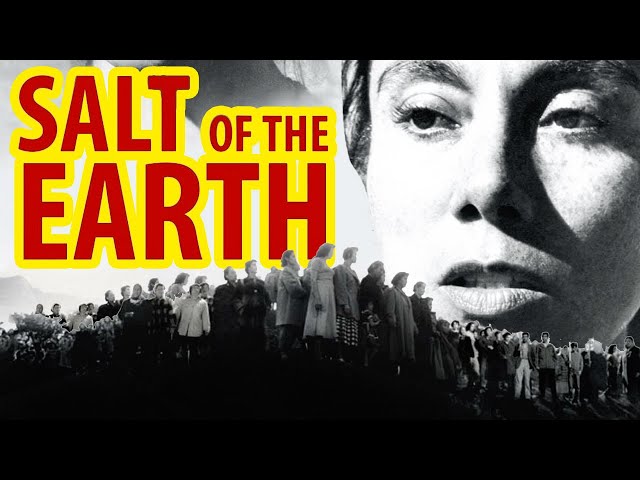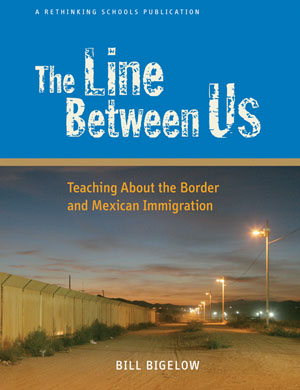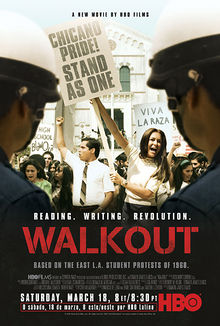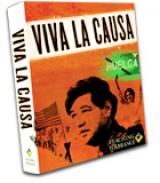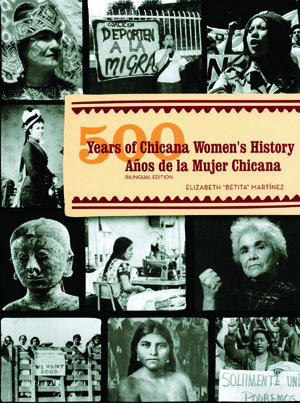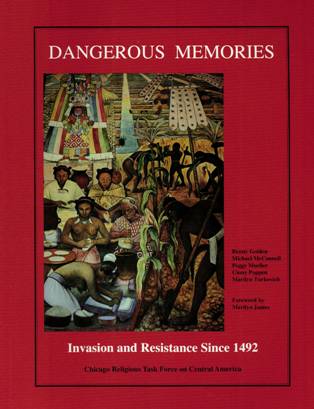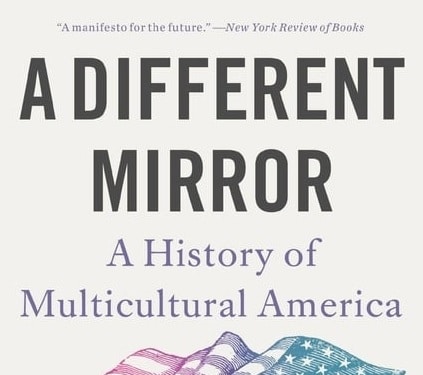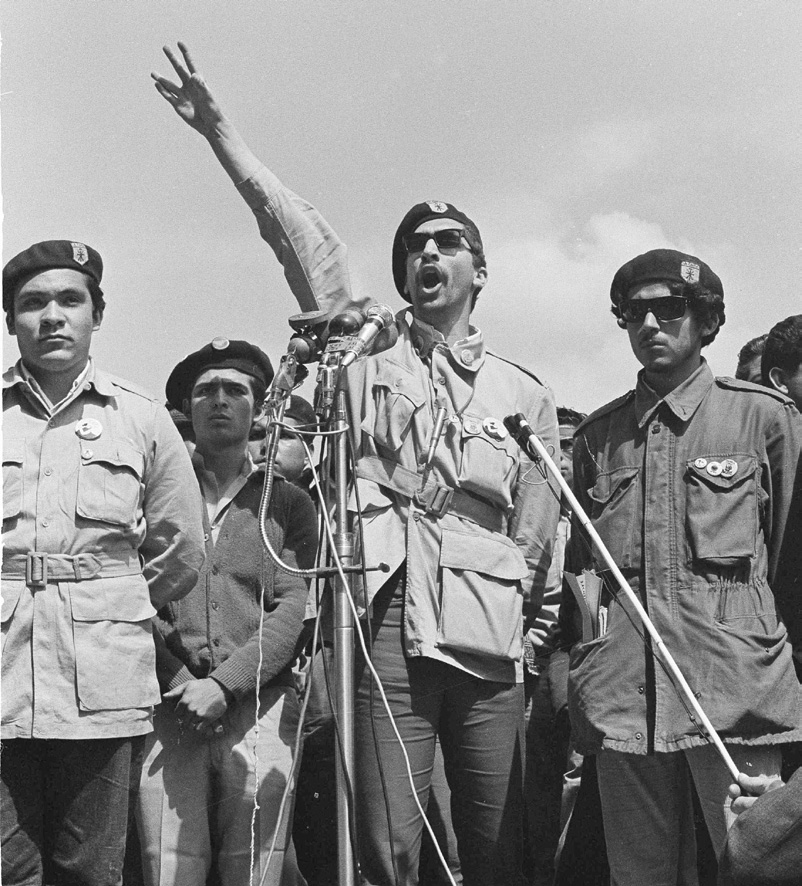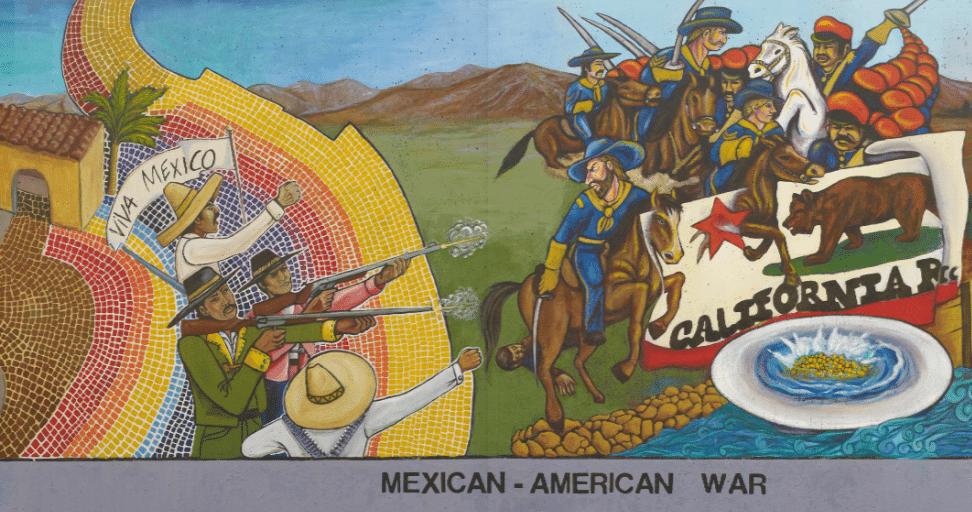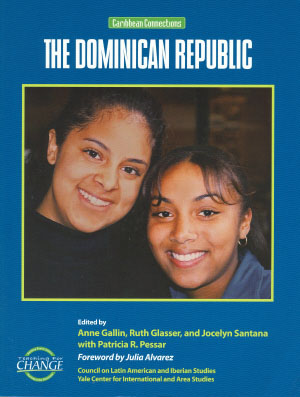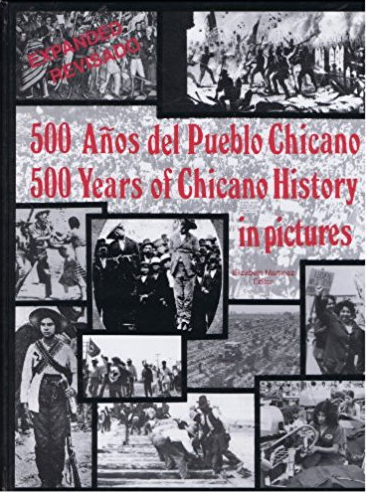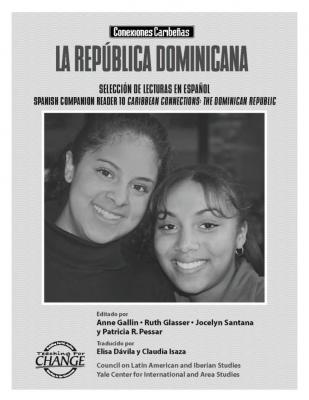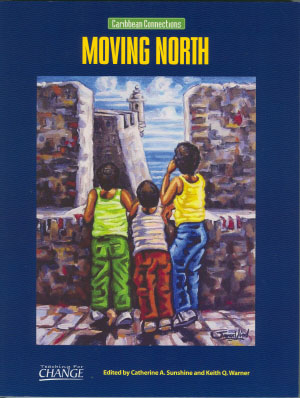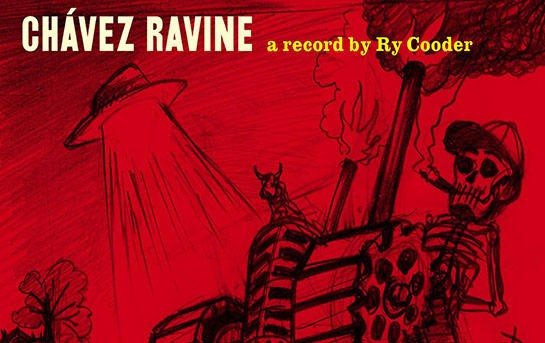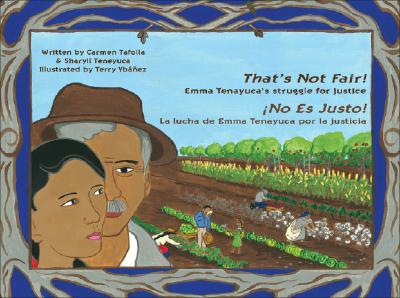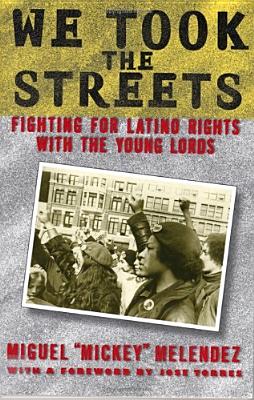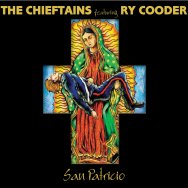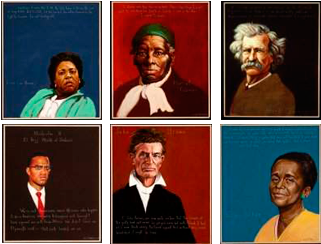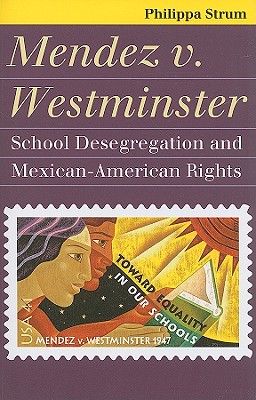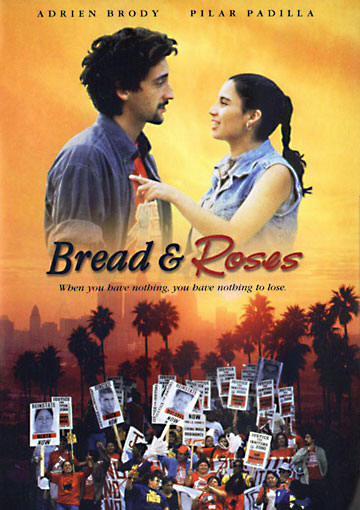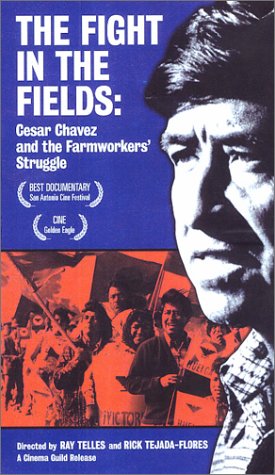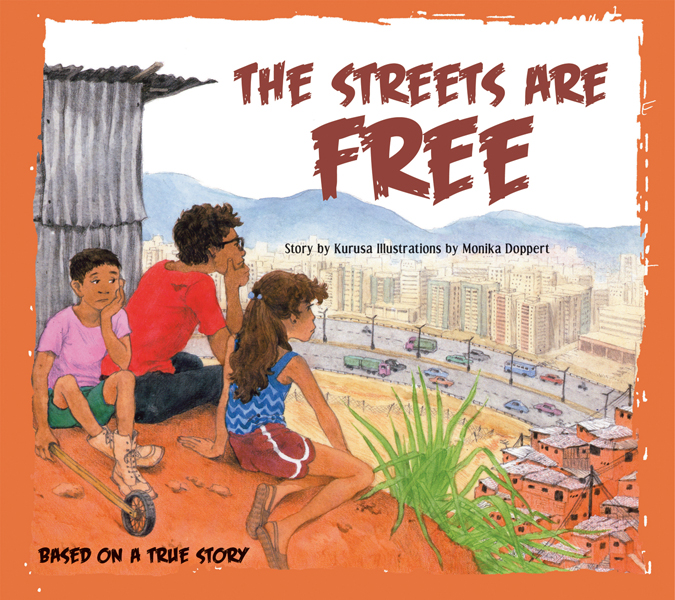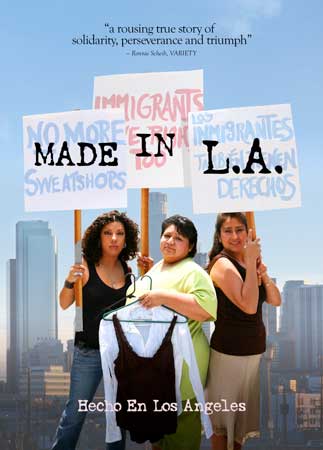Teaching Activity. By S. J. Childs. Rethinking Schools. 6 pages.
The author describes how she introduces students to the classic 1953 film, Salt of the Earth, about a miners’ strike in New Mexico.
Continue reading
Teaching Guide. By Bill Bigelow. 2006. 160 pages. Rethinking Schools.
Lessons for teaching about the history of U.S.–Mexico relations and current border and immigration issues.
Continue reading
Film. Produced by Moctesuma Esparza. 2006. 111 minutes.
Walkout tells the true story of the Chicano students of East L.A., who in 1968 staged several dramatic walkouts in their high schools to protest academic prejudice and dire school conditions.
Continue reading
Film. Bill Brummel Productions. 2008. 39 minutes.
A documentary film and teaching guide on the grape strike and boycott led by Cesar Chavez and Dolores Huerta in the 1960s.
Continue reading
Book — Non-fiction. By Elizabeth Martinez. 2007. 899 illustrations.
Stories and photos of Chicana/Mexican-American women in politics, labor, art, health, and more.
Continue reading
Book — Non-fiction. By Golden, McConnell, Poppen, and Mue. 1991. 272 pages.
Essential text on U.S. history; includes many primary sources on people's movements.
Continue reading
Book — Non-fiction. By Ronald Takaki, with a foreword by Clint Smith. 2023. 576 pages.
A multicultural history of the United States, in the voices of Indigenous people, African Americans, Jews, Irish Americans, Asian Americans, Latinos, and others.
Continue reading
Teaching Activity. By Gilda L. Ochoa. Rethinking Schools. 5 pages.
Reflections on teaching students about the 1968 walkouts by Chicano students in California.
Continue reading
Teaching Activity. Lesson by Bill Bigelow and student reading by Howard Zinn. Rethinking Schools. 21 pages.
Interactive activity introduces students to the history and often untold story of the U.S.-Mexico War. Roles available in Spanish.
Continue reading
Book — Non-fiction. Gary Soto. 2002. 116 pages.
An inspiring story of Jessie De La Cruz, one of the first women to organize for the United Farmer Workers.
Continue reading
Book — Non-fiction and Fiction. Edited by Gallin, Glasser, Santana. 2005. 250 pages.
Reader-friendly overview of the history, politics, and culture of the fourth largest Latino community in the United States.
Continue reading
Book — Non-fiction. By Elizabeth Martinez. 1991 (2nd Edition).
Chicano history as told through hundreds of pictures and bilingual text.
Continue reading
Teaching Guide. By Anne Gallin, Ruth Glasser and Jocelyn Santana. 2005.
Selected readings in Spanish from "Caribbean Connections: Dominican Republic."
Continue reading
Teaching Guide. Edited by Catherine Sunshine and Keith Warner. 2005. 240 pages.
Literature and essays about Caribbean life in the United States.
Continue reading
Songs. By Ry Cooder. 2005. 70 minutes.
The story of the Chicano community bulldozed to pave the way for the Dodger Stadium in Santa Monica, told through bilingual songs.
Continue reading
Picture book. By Diana Cohn and illustrated by Francisco Delgado. 2008. 31 pages.
A children's book based on the true story of the Justice for Janitors strike.
Continue reading
Picture book. By Carmen Tafolla, Sharyll Tenayuca, and Celina Marroquin. 2008. 40 pages.
Bilingual (Spanish and English) biography of labor activist Emma Tenayuca for upper elementary.
Continue reading
Book — Non-fiction. By Miguel Melendez. 2003. 260 pages.
Legacy of the Young Lords in the Puerto Rican struggle for equality and independence.
Teaching Activity by Miguel Melendez
Continue reading
Audio. By The Chieftains featuring Ry Cooder. 2010.
Ballads about the San Patricio Battalion during the U.S. Mexico War.
Continue reading
Website.
Portraits by Robert Shetterly and biographies of individuals who have taken a stand for justice.
Continue reading
Book — Non-fiction. By Philippa Strum. 2010. 186 pages.
Description of a pre-Brown v. Board desegregation court case involving Mexican-American families.
Continue reading
Film. By Ken Loach. 2001. 106 minutes.
A compelling, fictionalized account of an actual labor campaign in Los Angeles.
Continue reading
Film. Ray Telles and Rick Tejada-Flores. 1997. 116 minutes.
A documentary on the farmworker movement told by the organizers and farmworkers themselves.
Continue reading
Picture book. By Karusa. Illustrated by Monica Doppert. 1985 (reissued 2008). 48 pages.
A group of children organize to convince the mayor that they need a playground.
Continue reading
Film. By Almudena Carracedo and Robert Bahar. 2007. 70 minutes.
Emmy award-winning feature documentary follows the story of three Latina immigrants working in Los Angeles sweatshops on an odyssey to win basic labor protections from a clothing retailer.
Continue reading

